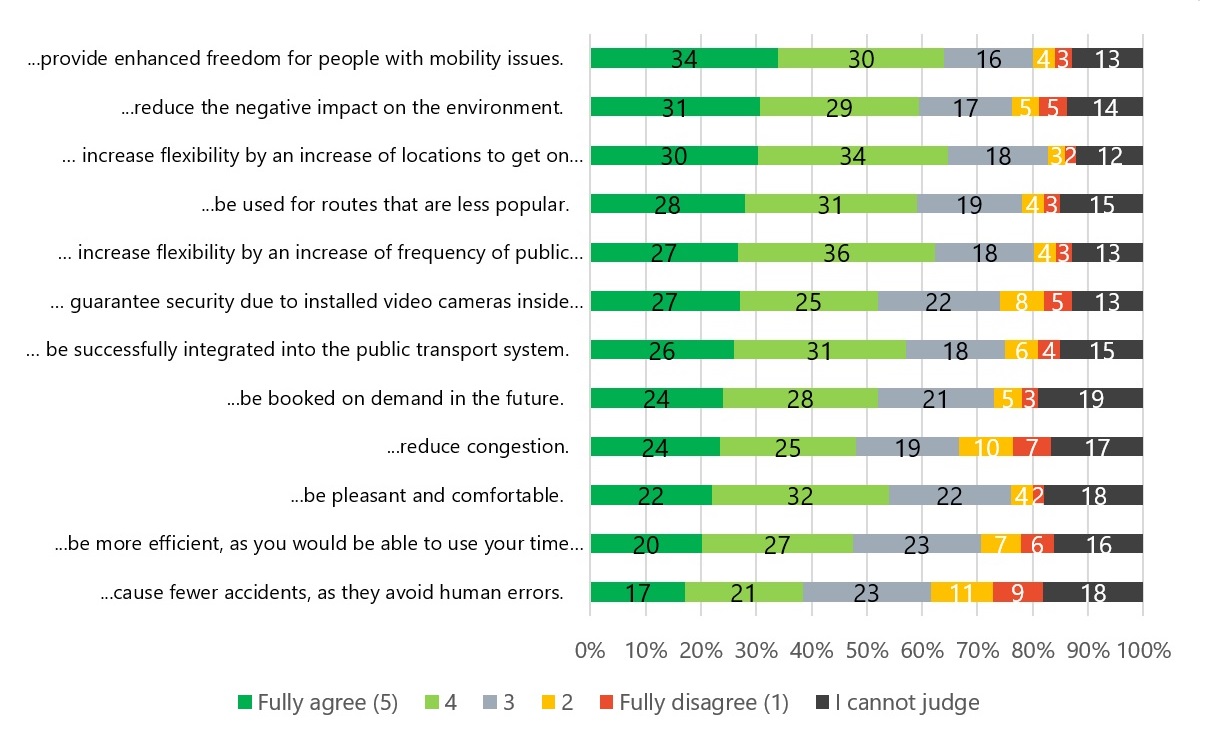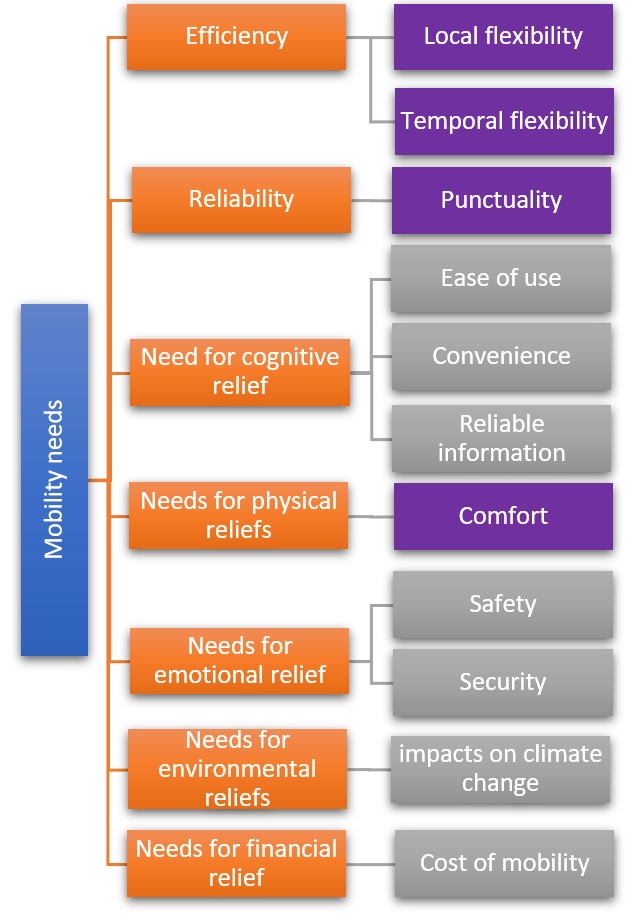As part of the EU H2020 Framework Programmes for Research and Innovation, the AVENUE project is funded by European citizens. In this respect, it must above all ensure that they want an Automated Minibus (AM) service and that this technology will meet their needs and expectations.
To achieve this and to assess the AM advent’s social impact more generally, six distinct types of large-scale qualitative and quantitative surveys have been conducted by our teams within all the AVENUE demonstration sites cities (within 1,816 potential users, 112 actual users and some safety drivers).
What do we have assessed?
- The AMs acceptance, also considering attitudes, expectations, fears and hesitations.
- The current mobility gaps and needs and whether AMs could fill them.
- The AMs perceived potential advantages and the concerns and expectations towards them.
- The experience of those that already tried an AM, their satisfaction level and what they think about it, to examine the usability of current AM services and define the needed changes.
- The AMs accessibility level for people with reduced mobility (PRM) and their opinion and feelings regarding this technology.
- The current mobility attitudes and behaviors and their potential evolutions induced by the AM advent, particularly regarding the usage of public transport (PT).
- The motivations to use AMs, the current public awareness, the potential users’ profiles, etc.
These surveys led to many advances, novel findings and conclusions
Excellent public perception / acceptation
Automated Minibus (AM) services are perceived as a promising solution to fill the current mobility gaps and our surveys’ respondents expect AMs to increase both temporal and local flexibility.
There is no major rejection or skepticism toward AMs among the respondents and the attitude toward AMs is mainly positive.
AMs benefits are well anticipated by the respondents who spontaneously perceived that AM could improve flexibility and thus freedom, lower waiting times, provide a cheaper transportation alternative and help people with reduced mobility (PRM). The respondents all claim that these improvements will meet their needs.
The respondents also expect AMs to offer Door-to-door/On demand services for more spontaneous mobility. These services are also an important insensitive to AM use.
Perceived AMs advantages according to our survey:

High trust and willingness to use
A large majority of the respondents of our studies stated that they are inclined to use Automated Minibuses (AMs) and feel they can trust them.
Willingness to use an AM according to our studies:

High satisfaction with the service offered
Our survey among passengers who have already travelled in the project’s automated minibuses, showed that passengers were particularly satisfied with the service offered by the various AVENUE deployments, showing that the adopted model is already very well adjusted.
Necessity of a primacy of the consumers’ needs and of a Door-to-door/On demand service
In the population’s eyes, it’s not the technical innovativeness, the absence of a driver or being an electrically powered/eco-friendly vehicle that offer an added value to Automated Minibuses (AMs), but rather the fact that this technology provides answers to their different needs.
Costumers’ needs are mainly linked to effectiveness and spatial and temporal flexibility to move around; an On demand and Door-to-door service is therefore needed and is implying an automation of the vehicle operation (the on-demand-service being only economically feasible without a driver).
The AM acceptance depends on how mobility needs are satisfied locally and AM services are seen as a great mobility solution in locations with an acute need for improved PT.
Here are the different needs we identified:

Positive influence of the usage/experience
The respondents that tried an Automated Minibus (AM) were pleased with their ride, they attached higher advantages to AMs and perceived fewer risks than potential users (who did not try it). Their expectations towards AMs and their willingness to use them were high and they expected AM services to soon become a major Public transit mode or at least be integrated into public transport services (and would even promote them).
Favorable evolution of the perceptions
We repeated three of our surveys and the results showed that the perceptions toward autonomous minibuses have improved over time.
The AM operation on our various demonstration sites has also allowed us to conclude
Strong potential to address the population’s daily needs
Our teams have also come to the conclusion that autonomous minibuses have a strong potential to meet the needs of the population. Indeed, the advantages offered by the model correspond to the needs of the users that we have identified during our studies.
Great potential to facilitate the daily life of people with reduced mobility (PRM)
The Belle-idée (Switzerland) and the Slagelse (Denmark) demonstrations took place in hospital complexes. They were of great service to the patients and proved to be of great interest to people with reduced mobility (due to a physical or mental handicap or advanced age).
We have also conducted surveys among people with reduced mobility (PRMs), which have confirmed the attraction of this particular population group for autonomous public transport and their desire to adopt these services as soon as possible. We have also determined, on the basis of our surveys, that both PRMs and the rest of the population are well aware of the advantages that AMs could bring to PRMs.
All our research and results are available in our public deliverables section (D8.7, D8.8 and D8.9 for the social aspect)


